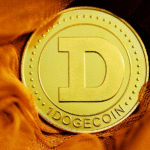Bitcoin Halving may lead to a lower adoption rate, lower supply and miners looking for opportunities elsewhere.
The year 2024 marks a pivotal moment for Bitcoin. Nestled within its code is a pre-programmed event known as the halving, which is set to transpire roughly around May. This event will see the block reward for miners, the new Bitcoin generated with each resolved block, cut in half.
While this might seem like a technical obscurity, the implications of the halving extend far beyond a simple reduction in new Bitcoin.
The Impact of the Halving
The most immediate consequence is a restricted supply. Bitcoin’s total issuance is capped at 21 million coins, and the halving effectively slows down the rate at which new Bitcoin enters circulation. This emulates scarcity, a fundamental principle in economics that often dictates value. In theory, a limited supply of Bitcoin against a potentially growing demand could push its price upwards.

However, the halving’s influence goes deeper. It impacts the security of the Bitcoin network. Miners are the backbone of the network, validating transactions and securing the blockchain through computational power. The block reward serves as their incentive. With a reduced reward, miners might be compelled to become more efficient or seek alternative sources of income, potentially through transaction fees. This could lead to a more robust and competitive mining landscape, further solidifying the network’s security.
The halving also sheds light on Bitcoin’s energy consumption. Bitcoin mining is often criticized for its reliance on vast amounts of energy. The reduced block reward might incentivize miners to migrate towards more energy-efficient mining techniques. Additionally, with a potentially higher Bitcoin price, the cost of energy consumption might become a more manageable factor for miners.
Furthermore, the halving can influence the adoption rate of Bitcoin. A potential price surge due to scarcity could attract new investors and users to the cryptocurrency. This, in turn, could fuel a wider acceptance of Bitcoin as a legitimate form of payment or store of value.

Looking Ahead
Looking ahead, the 2024 halving serves as a critical juncture for Bitcoin. It’s a test of its core economic principles and its ability to adapt and evolve. While the short-term effects remain uncertain, the halving paves the way for a future where Bitcoin’s role in the financial landscape becomes increasingly prominent.
The digital asset market is constantly evolving, and staying informed is crucial. At Kenson Investments, our specialists are dedicated to providing you with the latest trends, insightful updates, and valuable educational content in cryptocurrencies, real-world assets, and various digital assets. By joining our community, you’ll gain access to the knowledge and resources necessary to confidently navigate this complex market. Connect with us today and unlock your potential in the world of digital assets. Reach out to us today.
Disclaimer: The information provided on this page is for educational and informational purposes only and should not be construed as financial advice. Crypto currency assets involve inherent risks, and past performance is not indicative of future results. Always conduct thorough research and consult with a qualified financial advisor before making investment decisions.
“The crypto currency and digital asset space is an emerging asset class that has not yet been regulated by the SEC and US Federal Government. None of the information provided by Kenson LLC should be considered as financial investment advice. Please consult your Registered Financial Advisor for guidance. Kenson LLC does not offer any products regulated by the SEC including, equities, registered securities, ETFs, stocks, bonds, or equivalents”














